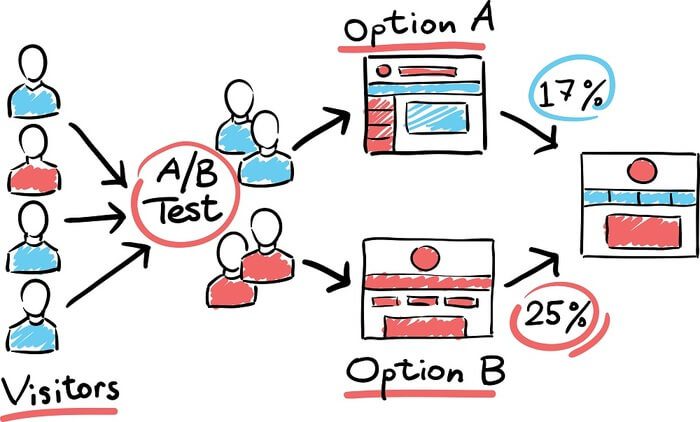Email A/B testing is generally used to select between two different variations of an email message so that the winning version can be sent to the broader population. A/B testing is a comprehensive topic; we will go into it in-depth in a future blog post. In preparation for that post, we want to examine the idea of a “confidence level,” which plays a big role in interpreting A/B testing results. For example, the result of an A/B test might say “Variation B wins, with a 96% Confidence Level.” What does that mean? And how it is estimated?

Let’s look at an example. Say there are two variations of email creative that we want to test. Suppose our desired outcome is more clickthroughs. We want to identify the email variation that generates better clickthrough rates using a small list so that we can use the winner for a bigger campaign down the line.
Accordingly, we do the A/B testing with the two email variations, and we get the following results:
Table 1: A/B Testing Results

At first glance, Variation B appears to have done better. However, could this be due to random chance? This is always a possibility, considering there is a much a larger number of email contacts in this database, and the A/B test was done only on a small sample of it.
We look at the confidence level statistic to address this concern. Deriving it requires a few calculations, as follows.
Calculating Conversion for Confidence Level
In our example, conversion (represented by P) is calculated as:
P = Number of Clickthroughs / Number of Emails Sent
As shown in Table 1,
P (Variation-A) = 2.0% = 0.02
P (Variation-B) = 2.5% = 0.025
Standard Error in Confidence Level Calculation
Standard error (SE) represents the statistical accuracy of an estimate (in this case, the conversion rates we calculated.)
The conversion calculation of each variation described above has a standard error associated with it. This is calculated using the following formula:
The standard error equals the square root of the conversion rate, multiplied by (1-conversion rate), divided by the sample size.
Expressed as a mathematical formula, it looks like this (SQRT stands for “square root of”):
SE = SQRT {P*(1-P) / Sample Size}
In our case, when we apply the formula to both our A and B variations, it looks like this:
SE (Variation-A) = SQRT {0.02(0.98) / 5000} = 0.00198
SE (Variation-B) = SQRT {0.025(0.975) / 6000} = 0.0020
(Read this article for more information on standard error and related concepts.)
Now, we will use those two formulas in yet another formula to get an important number.
Significance: the ZScore in Confidence Level Calculation
A statistic, usually referred to as the “ZScore,” helps us to determine whether the conversions in the two variations are really different because there is a true difference, and not because of random chance. It is calculated using the following formula:
The ZScore equals ( the Conversion in Variation B minus the Conversion in Variation A), divided by the square root of (Standard Error of Variation A, squared, plus the Standard Error of Variation B, squared).
ZScore = { P (Variation B) – P (Variation A) } / SQRT { SE2 (Variation A) + SE2 (Variation B) }
Here’s how that looks using our example numbers to calculate the ZScore:
ZScore = {0.025- 0.02} / SQRT {0.002^2 + 0.00198^2} = 1.77
Estimation of Confidence Level
The ZScore derived above can be roughly explained as the number of standard deviations between the Variation-A and Variation-B conversions. The greater the ZScore is, the more confident we are that the conversions we calculated in the two variations are actually different from each other.
We derive the confidence interval from a normal distribution curve (which can be used in cases with larger sample sizes of 1,000 or more.) Refer to a normal distribution probability table and you can derive the probability corresponding to ZScore of 1.77 is 0.96. This means that we are 96% confident that conversion derived in Variation B is truly higher than conversion in Variation A. Yet another way of saying this is: There is only a 4% chance that conversions derived in the two variations are actually the same, as an after-effect of random chance.
Generally in the case of email A/B testing, a confidence level of 95% or above is recommended. Therefore, in our example, we can be very confident that using Variation B is superior for producing the intended outcome (clickthroughs), and so we can confidently use it for our broader campaign.
Hopefully, this overview has shed some light on the concept of a confidence level.
